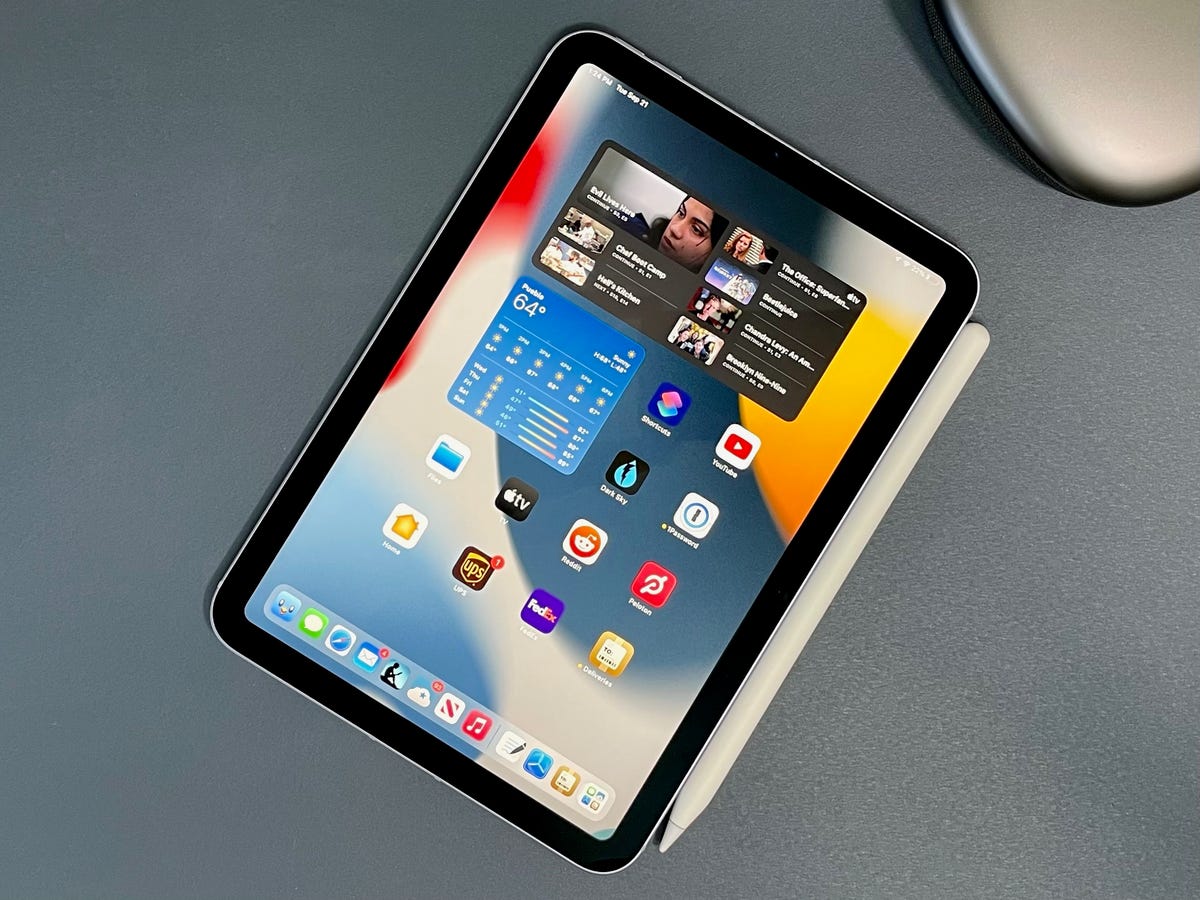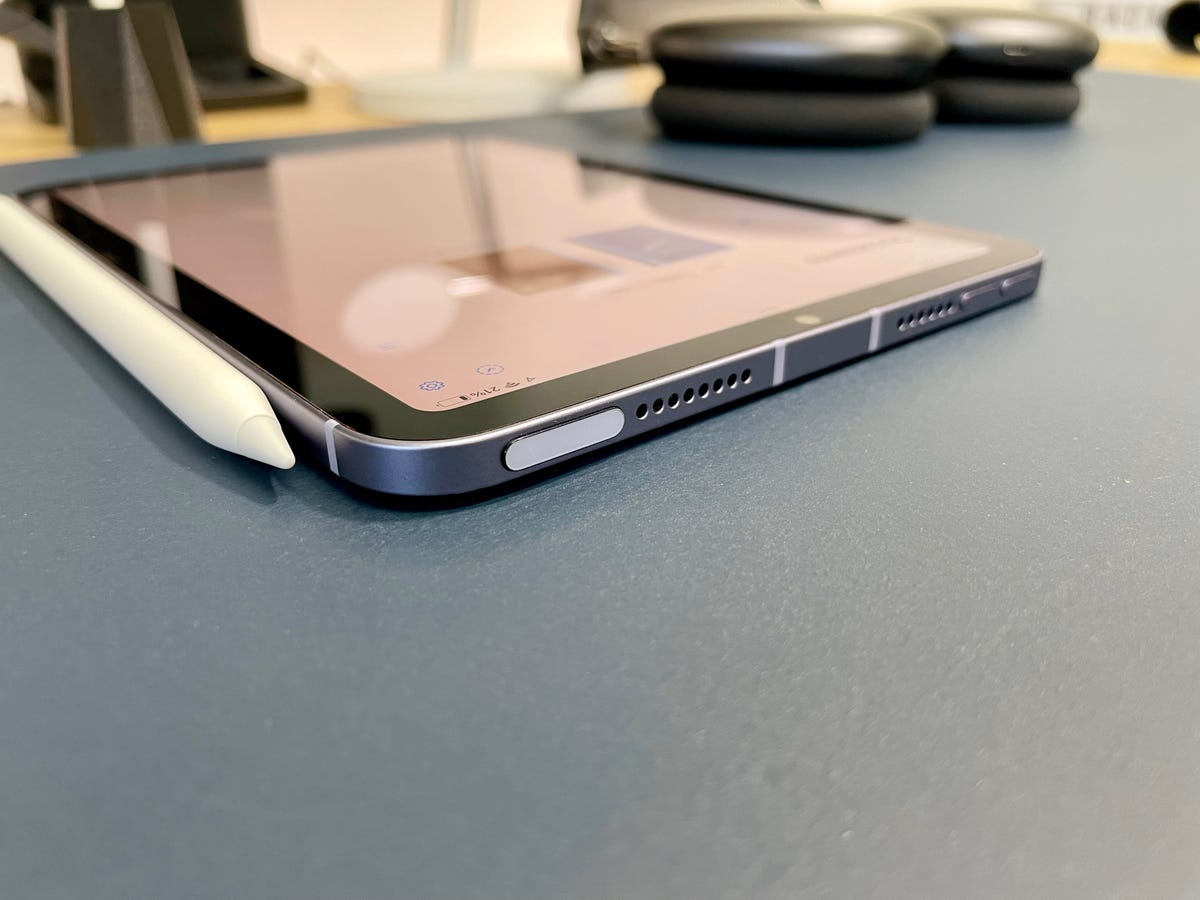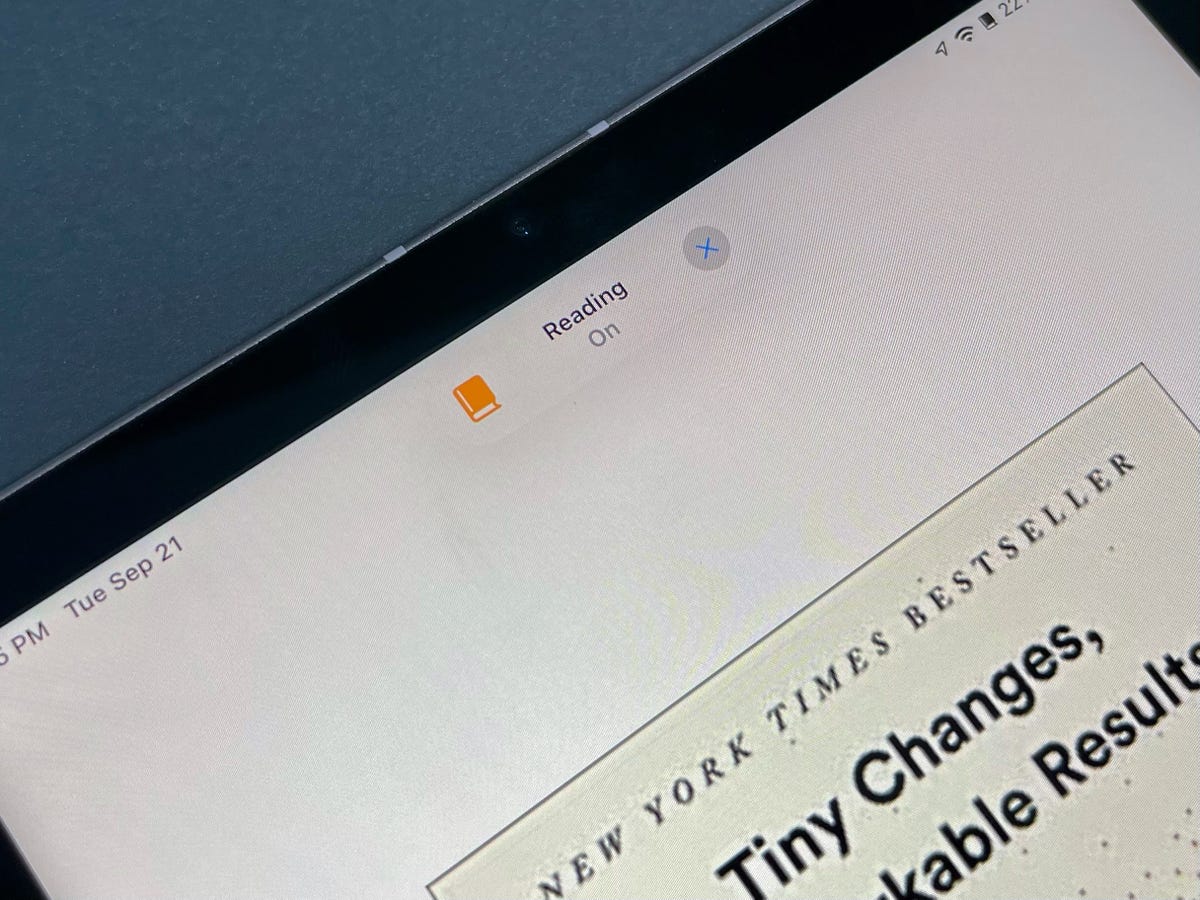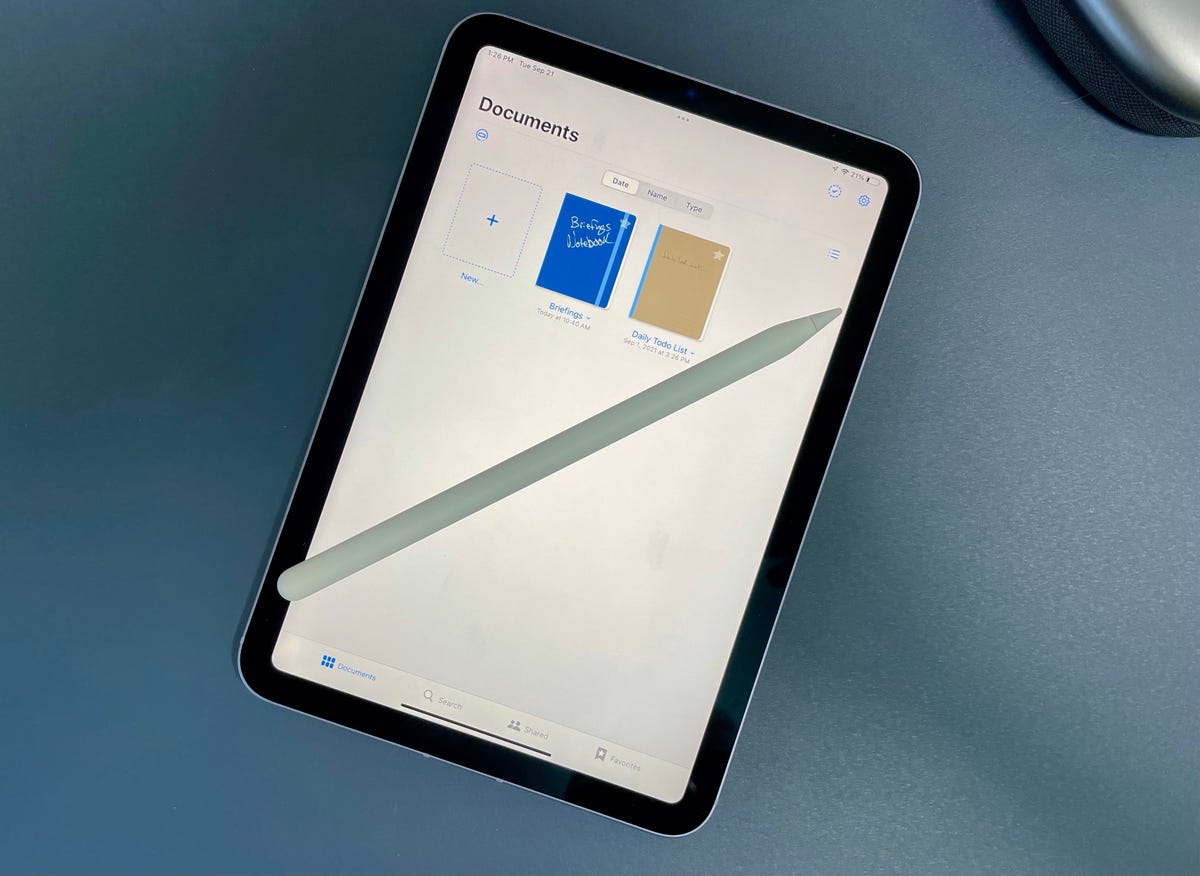I’ve only ever owned one iPad Mini. I bought the first one, released in 2012, and I temporarily replaced my main iPad with it as a writing device. The experiment wasn’t long-lived. Sure, I enjoyed being able to put it in the back pocket of my jeans or safely carry it around in my inner coat pocket. But, after a couple of months, I missed the larger display of the iPad for work.
However, for the last week, I’ve been using the 6th Generation iPad Mini, which is currently available for purchase for $499, with orders arriving as soon as this Friday, Sept. 24.
I’d be lying if I said I wasn’t absolutely fascinated by it. It’s smaller than the iPad Mini’s before it but has a larger screen — and it exists in a world where smartphone displays, such as the iPhone 13 Pro Max and its 6.7-inch display, are commonplace.
Before the Mini arrived, I thought I had figured out where and when it would fit into my daily routine. My prediction ended up being somewhat correct — it’s an excellent device to sit down on the counter and tap or swipe around. But there are a few areas where the iPad Mini has surprised me. To me, it’s clear there’s a very specific type of customer who wants an iPad Mini. I also am starting to think those lines are becoming blurrier.

Jason Cipriani/ZDNet
A fresh but familiar (re)design
The iPad Mini has gone Pro, just like the iPad Air before it. That is, Apple has removed the iconic home button that’s been present on all five generations of the iPad Mini before it. The rounded edges have been replaced with flat edges on all four sides, and there’s now a spot to attach and charge the second-generation Apple Pencil magnetically. The Lightning port has been swapped out for a USB-C port.
Removing the home button allowed Apple to expand the iPad Mini screen size, going from 7.9-inches to 8.3 inches, without increasing the size of the tablet itself. In fact, the new Mini is smaller than its predecessors, measuring 7.69 x 5.3 x 0.25-inches, compared to 8.0 x 5.3 x 0.24-inches, despite the larger display.
The new Mini is the second device in Apple’s lineup that features a Touch ID fingerprint reader embedded in what Apple’s calling the top button. It works just as fast and smooth as it did on the iPad Air. Just like the home button with Touch ID underneath it, the top button on the Mini doesn’t require you to press it in order for it to scan your fingerprint and unlock the iPad. That said, I’ve found myself pressing the button to wake the iPad while simultaneously unlocking it using Touch ID.
Also located on the top of the iPad Mini are the volume up and down buttons. The ride side of the housing is where the second-gen Apple Pencil attaches to the Mini, serving as an accessible spot to place the stylus when not in use while simultaneously charging it.

Jason Cipriani/ZDNet
On the bottom of the Mini is a USB-C port. The switch to USB-C on the Mini means only the entry-level iPad uses a Lightning connection. And, of course, all iPhone models.
When holding the Mini vertically, along the top of the display is a new 12-megapixel ultra-wide FaceTime camera. When using the camera for video calls, be it on FaceTime, Zoom or WebEx, the camera will follow you around and make sure you’re in view at all times. If there are multiple people with you, it will ensure everyone can be seen, zooming in and out as people enter and leave the area.
We first saw Center Stage on the 2021 iPad Pro lineup, and it’s starting to trickle down the lineup, making its way to the iPad Mini and 9th generation iPad. Leaving the iPad Air as the only tablet without the fun and very useful feature. On the back of the Mini is a 12-megapixel camera that can record 4K video.
Something is refreshing about the design of the iPad Mini, even though we’ve already seen the same flat-edged approach on several Apple devices. Apple has standardized the look by using it on the iPhone 12, iPhone 13, iPad Pro, iPad Air, and iPad Mini.
The new Mini comes in purple, pink, starlight or space gray. You have the option of either 64GB or 256GB of storage.

Jason Cipriani/ZDNet
Fitting the iPad Mini into your workflow
Inside the iPad Mini is Apple’s A15 Bionic processor with a 6-core CPU, 5-core GPU and a 16-core Neural Engine for Machine Learning. That’s a lot of jargon, but it distils down to a performance boost, regardless if you’re just checking email, playing games or using the new multitasking tools in iPadOS 15.
The 8.3-inch Liquid Retina display has a resolution of 2266 x 1488. It’s bright, colors are vibrant, and the text looks crisp. As for connectivity, you’ll get an 802.11ax Wi-Fi 6 connection with a compatible Wi-Fi network at home, Bluetooth 5.0 and the cellular model comes with 5G. To be clear, the Mini’s 5G cellular connection will only work with a carrier’s Sub-6 network. That’s currently the most common type of 5G network here in the US, which most of the time is faster than 4G LTE. The lack of mmWave support in the Mini will surely disappoint and frustrate some users, especially those enterprise users who have mmWave coverage in an office or warehouse.
While it’s important to talk about the components that make up a device, but the real story lies with actually using the device. Before I detail where and how I used the iPad Mini in my daily workflow, let me give you some background. I routinely switch between a MacBook Pro and iPad Pro, depending on what I’m working on. Recording podcasts, videos and some editing tasks are when you find me on my MacBook Pro. The iPad Pro is normally what I’m sitting in front of outside of those areas — often connected to an external monitor.
I don’t often use my iPad Pro as a consumption device, be it to watch random YouTube videos or to read a book. It’s a work device, through and through.

Jason Cipriani/ZDNet
When testing the iPad Mini, I tried to use it in a variety of ways. I typed out a few long-winded emails for work, triaged Slack messages in work-related groups, and exchanged iMessages with my family. During all of those activities, the Mini felt fast, fluid and responsive. I struggled to figure out the ideal position and method to type on the Mini’s screen when holding the tablet horizontally. Still, I could type without issue when turning it into a vertical orientation when the Mini is narrower to hold.
I have been using the GoodNotes app on my iPad Pro to make a daily task list or jot down notes during meetings and briefings. But the size of the iPad Pro lying on my desk is something that’s always frustrated me with the experience. It takes up too much room on my desk, and I can’t find a comfortable setup to use my iPad Pro as a note-taking device. With the iPad Mini, however, its compact size is more manageable. I don’t have to move my keyboard and mouse or trackpad out of the way to make room. Within a few hours, the iPad Mini quickly became my preferred device for taking notes.
During my time testing, I naturally gravitated to the iPad Mini for tasks that I normally used my iPhone 12 Pro for. Things like reading a book in the Kindle app, or doing research in Safari about a new product, watching YouTube videos, or even streaming an NFL game on this past Sunday. With the addition of Center Stage for video calls, it’s also been what I’ve used for personal calls and meetings where notes weren’t needed.
In the past, I preferred to use a Kindle for reading simply because it lacked any sort of distractions that come with using a device, like an iPad, that’s also connected to far too many communication tools. So with the iPad Mini, which ships with iPadOS 15, I set up a new Focus mode that automatically turns on whenever I open the Kindle app. It blocks all alerts and messages from showing up while I’m reading and then turns off once I leave the app. I think the focus will end up being one of the biggest additions to iOS 15 and iPadOS 15.
With a larger display than my iPhone 12 Pro, but a smaller overall footprint than my iPad Pro, the Mini lends itself to being a device you pick up and move around with. I often went from the couch to the patio to the hammock with the Mini in hand. That’s something I’d never do with my 12.9-inch iPad Pro and would hesitate to do it with the 9th Gen iPad.
Battery life has lived up to the promise that is every iPad’s battery life — roughly 10 hours of use. In my testing, I was able to get through a couple of days’ worth of use before I needed to charge it.

Jason Cipriani/ZDNet
Who is the iPad Mini for?
From the moment Apple announced the new iPad Mini, I’ve repeatedly asked myself, “Who is the iPad Mini for? Who buys it? And do they use it for?” Do parents buy it for their kids? Do people buy the Mini instead of a Kindle? Or is it a laptop replacement device for some?
My internal dialogue gets even more confusing when I start to analyze the iPad lineup as a whole. Looking at the iPad lineup without any prices, arranging the tablets in order of size, the iPad Mini makes sense. But when you arrange by price, the lineup starts to get confusing.
The iPad Mini starts at $499, while the bigger 9th Generation iPad starts at $329. Granted, the Mini has newer hardware, both inside and out. That includes the latest processor, 5G support, an updated design, improved display and second-generation Apple Pencil support. On paper, it’s clearly the better tablet, and that alone can be used to justify the price difference. Where I got stuck in my line of thinking, and I’d imagine other consumers will as well, is only looking at the iPad Mini’s relative size compared to other iPad models. It’s smaller, so it should cost less. Apple uses that exact approach with the iPhone 12 Mini and iPhone 13 Mini. It’s the smallest in the lineup and also the least expensive.
Ultimately, I think the type of person who buys the iPad Mini is a mixture of multiple use cases. It makes for a fantastic Kindle substitute. The Mini is a fantastic Nintendo Switch replacement, boosted by Apple Arcade. And for someone who prioritizes portability over a large display, it’s a powerful, if not modern version, of a netbook.

Jason Cipriani/ZDNet
Bottom line
The iPad Mini is one heck of an upgrade over the previous generation. The new design is refreshing, while the upgraded internals and larger display combine for solid performance and battery life. The star of the show here, though, is how easy it is to take the Mini with you.
If having the ability to put a powerful tablet in your purse, jacket pocket or carry-on without taking up too much space is a priority for you, then I can’t think of a single tablet better suited to fill that role than the iPad Mini.

